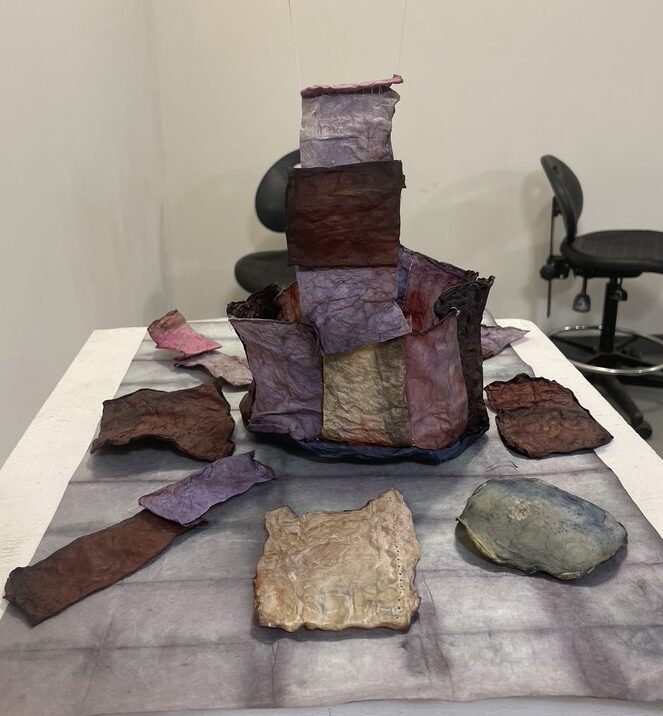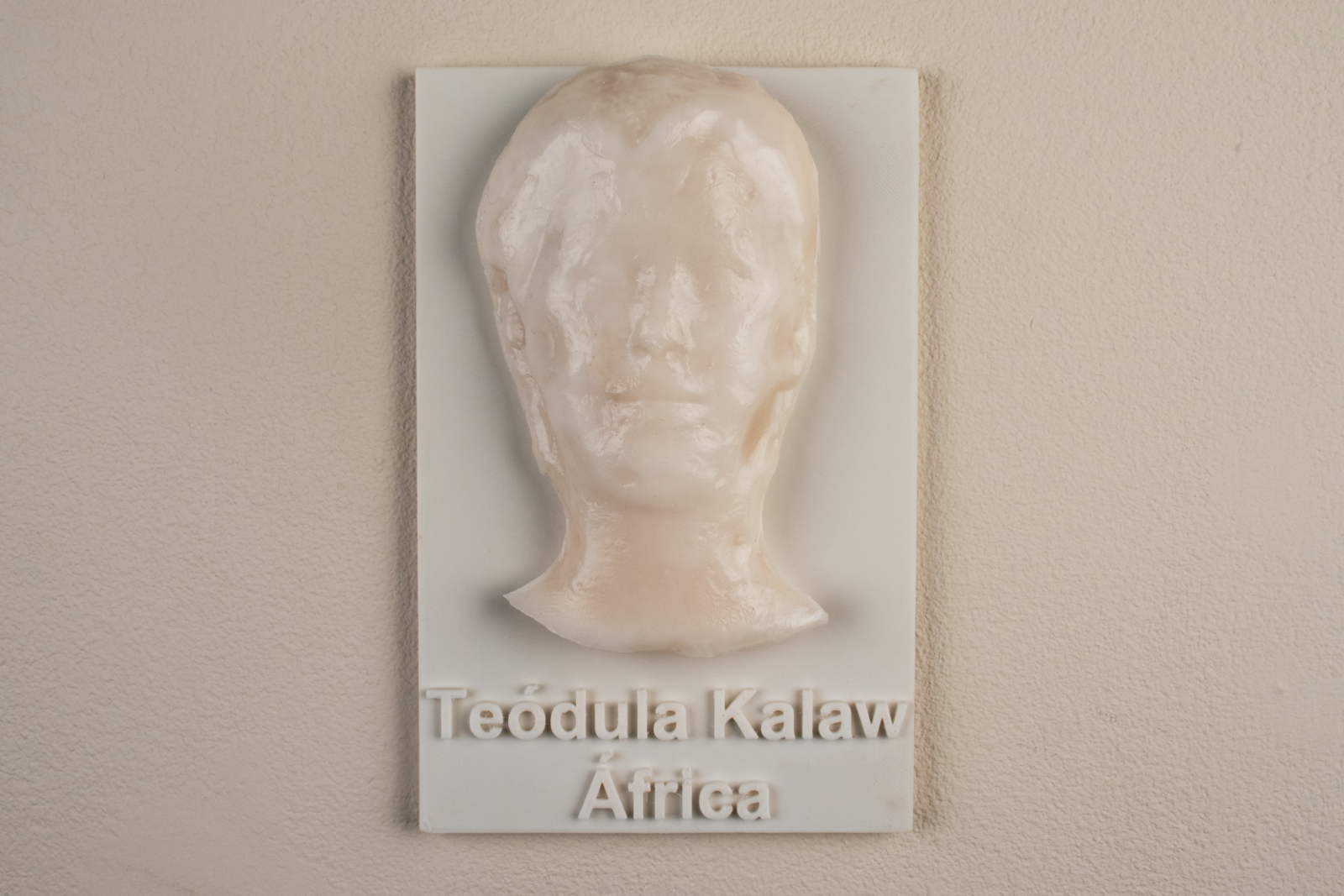“my God is dark
and like a web:
a hundred roots
silently drinking.
This is the ferment I grow out of.”
put your 50 word project sttement here
put your 50 word project sttement here
put your 50 word project sttement here
A basket made out of pieced bacterial cellulose, naturally dyed with indigo, logwood, pokeberry, and cutch: a basket to hold the remnants of a lifecycle, to become a placeholder for time, to honor the gathering of information, to pay respect to process, to give back to the the soil we came from.
Mycelium project using reishi mushrooms.
What is the future of natural dyes? Can our clothes be dyed with bacteria? For the bacterial drawings project, I was interested in testing the potential of bacteria as a “natural” dye to see if it would dye natural fibers. Building connections with all natural beings, bacteria included, is a collaboration that I am passionate about for my material research in my practice.
The way that mycelium grow triggered me thinking of the idea of bond, in many different contexts. The most intuitive one for me is the knot that we have on clothes. Especially in Chinese traditional clothing, the way to tie a knot is very elaborate. So I did some research and happened to find that one of the knot name included my mother’s name. It is interesting how it bonds me to this specific knot through the bond between me and my mother.
Try to inflate a cellulose and use an arduino and a heart rate sensor to control the inflating action. By controlling different inflation and deflation time, the cellulose can simulate the sensation of breathing and heartbeat.
Continuing from my bacterial print under the same image and title, I was interested in how to carry these conversations into the realm of folk craft and culture. To do so, I decided to experiment with turmeric anthotypes with the bacterial cellulose.
“god’s eye / god in a seed” explores the intersections of microbial life, AI technology, the human hand, and theology. How do we interact with that we do not know? How do we interact with that which seems to know us too well?
Using mycelium as a way to remember, a way to reconnect – but how does it feel to be forgotten?
Try to use the layering method to apply a second layer of color with a new kapton after the first layer of E.coli has already showed up the color.
Formed mycelium into small blocks and stacked them up into an architectural model.
put your 50 word project sttement here
put your 50 word project sttement here
put your 50 word project sttement here
I have always had a special connection with ‘skin’ (I’m not referring specifically to skin here, but any object that creates a sense of envelopment). I take pleasure in observing how skin can be contorted, stretched, lifted, and imprinted. I am drawn to the states brought about by the tension of force and matter pulling out of the skin. It is an invisible yet seemingly tangible force, a state that allows me to feel two completely opposite and even contradictory sensations at the same time.
Knowing that E.coli will gradually “disappear” after a while of growth (it is actually that the bacteria spread out on plate so the color fades out), I want to grasp and make art out of this characteristic. The 语气词, similar to interjections in English (I’m still trying to find the best translation), in Chinese language are always at the end of a sentence and all of them don’t have a tone, which is rare in Chinese because generally speaking every word has a tone. That makes 语气词 unremarkable and is easy to be ignored. So I want these words to be displayed in an already faded state.
Using mycelium to express the joy of collaboration.
Making a hat out of Reishi Mycelium.
Bacterial cellulose plaque featuring the creator of Nata De Coco.
Mimicking cave paintings with CRISPR and fluorescent red Ecoli.
This piece is conceptually rooted in my current thesis practice of making holes and exploring tranparencies.
Using bacterial cellulose, cotton twine, and natural dye to mimic decaying skin.























